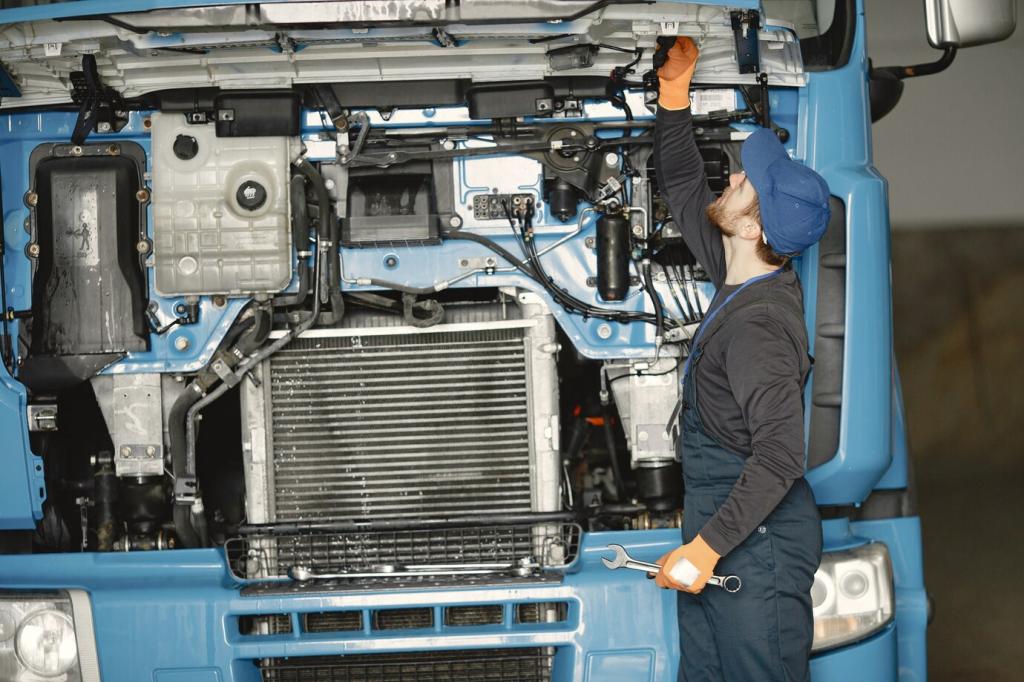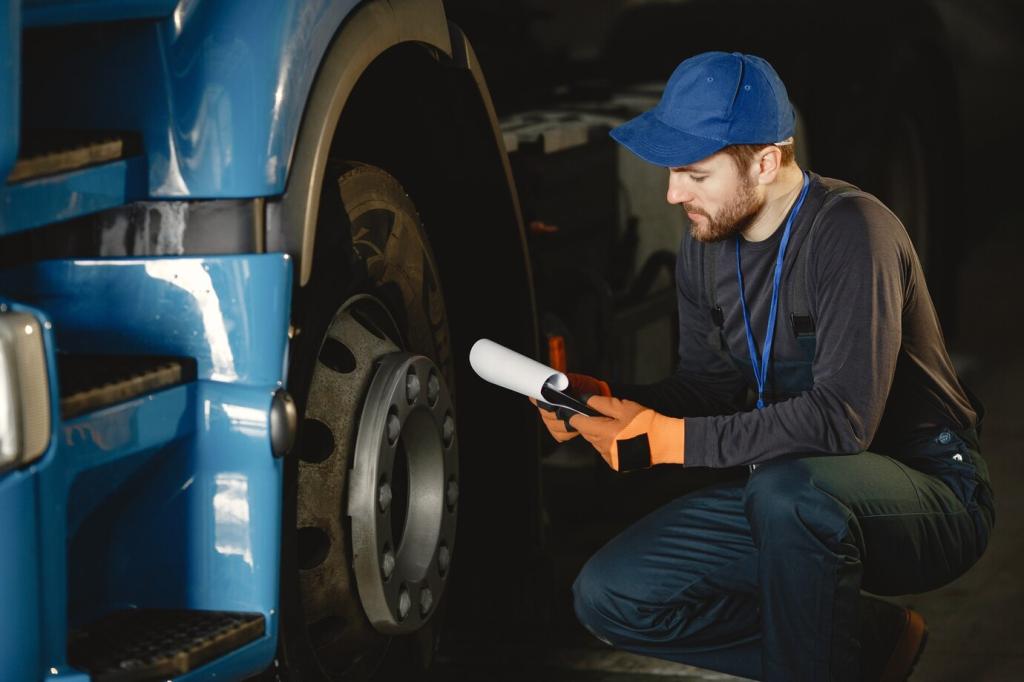Today’s chosen theme: Battery Replacement Techniques for Fleet Vehicles. Dive into practical, safety-first methods that reduce downtime, standardize procedures, and keep your entire fleet confidently on the road. Subscribe for future deep dives and share your own hard-won lessons.
Start With Smart Diagnostics, Not Guesswork
Capture resting voltage, cranking voltage drop, and alternator output under load. Scan for DTCs that hint at charging system faults. Use a conductance or carbon-pile test to verify CCA health and reserve capacity before committing to a battery swap.

Stabilize Vehicle Power Safely
Use a memory saver on the OBD-II port to maintain module states when appropriate. De-energize accessories, unlock steering, and wait for SRS and high-draw modules to sleep. Always disconnect negative first to prevent accidental short circuits and protect sensitive electronics.
Know the Platform and Its Hazards
Different vans, light trucks, and stop-start vehicles have unique battery layouts, venting, and hold-down systems. Confirm whether dual batteries, under-seat locations, or auxiliary packs are present. Never mix procedures from hybrids or EVs with conventional systems without certified training.
Protect People and Preserve Settings
Wear insulated gloves and eye protection, keep neutralizer nearby, and use insulated tools. Preserve radio presets, camera calibrations, and telematics configurations by following OEM memory procedures. Label all disconnected cables to avoid cross-connection and expensive module damage.

Verify CCA for cold starts, but balance with reserve capacity for accessory-heavy shifts. Consider alternator output and idle time. Undersized batteries wear quickly under PTO loads, while oversized units can strain brackets and increase cost without meaningful gains.

Removal and Installation Techniques That Prevent Callbacks
Neutralize corrosion with baking-soda solution, rinse, dry, and apply protective spray. Wire-brush terminals gently, avoid removing protective plating, and replace damaged clamps. A clean contact surface reduces resistance, improves charging efficiency, and extends the new battery’s lifespan.
Removal and Installation Techniques That Prevent Callbacks
Torque terminals to spec and secure the hold-down evenly. Over-tightening damages posts; under-tightening invites vibration-induced failures. Confirm cable slack and strain relief so movement does not stress terminals during rough roads, curbs, and frequent loading dock stops.


BMS Registration and Smart Charging Calibration
Many stop-start platforms need battery type, capacity, and serial logged in the BMS. Without registration, alternators may undercharge or overcharge. Confirm requirements on brands known for strict procedures and verify successful adaptation with a post-installation scan.
BMS Registration and Smart Charging Calibration
For resets and firmware updates, connect a regulated power supply maintaining safe voltage during programming. Smart chargers with temperature compensation protect AGM and EFB chemistries. Avoid quick boosts that mask weakness rather than properly conditioning the battery.
Post-Installation Validation and Preventive Maintenance
Perform a Complete Health Check
Verify resting voltage after charge acceptance, retest cranking voltage drop, and measure alternator ripple. Confirm parasitic draw is within spec. Check high-load accessories—lifts, inverters, and lights—under real conditions to ensure the charging system keeps pace.
Hunt Parasitic Draw Methodically
Use an inline ammeter, let modules sleep fully, and pull fuses strategically to isolate problem circuits. Common culprits include aftermarket telematics, dash cameras, or door sensors. Document findings so repeat issues can be addressed fleetwide, not just per vehicle.
Close the Loop With Telematics
If available, trend voltage and start success events to flag weak batteries early. Create threshold alerts for cold snaps and heavy accessory seasons. Invite drivers to report slow cranks promptly so schedules can adapt before failures strand deliveries.
Sustainability and Logistics for Fleet-Scale Replacements
Core Returns and Responsible Recycling
Set clear core-handling instructions, sealed bins, and weekly pickups to avoid spills and fines. Track return credits transparently. Partner with certified recyclers who provide documentation that satisfies regulatory requirements and your organization’s sustainability reporting goals.


Inventory and Storage Best Practices
Use FIFO rotation and store batteries in cool, dry areas off concrete with terminal protectors installed. Periodically top off charge on shelf, especially for AGM units. Label pallets by chemistry and group size to speed correct selection during urgent swaps.
